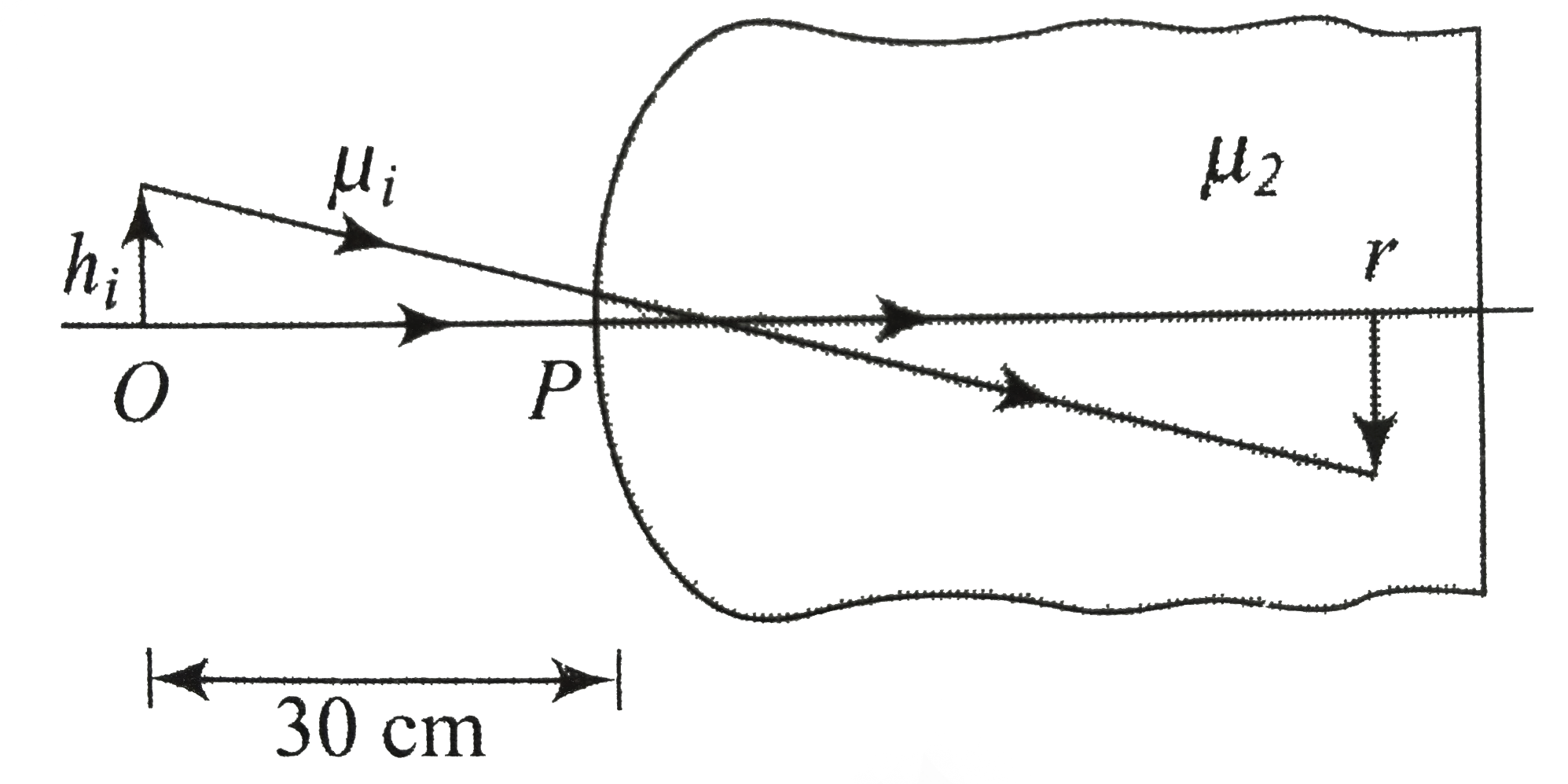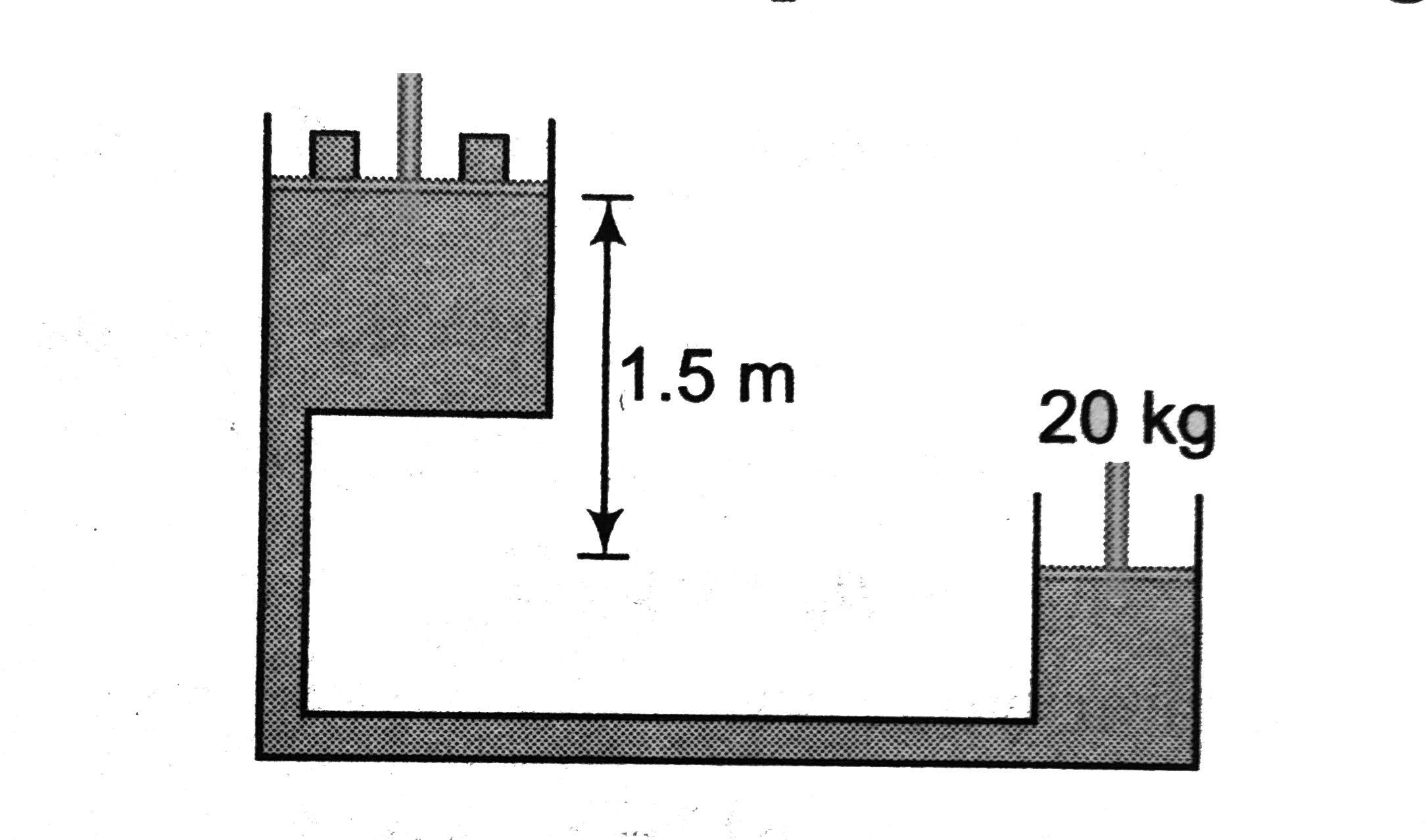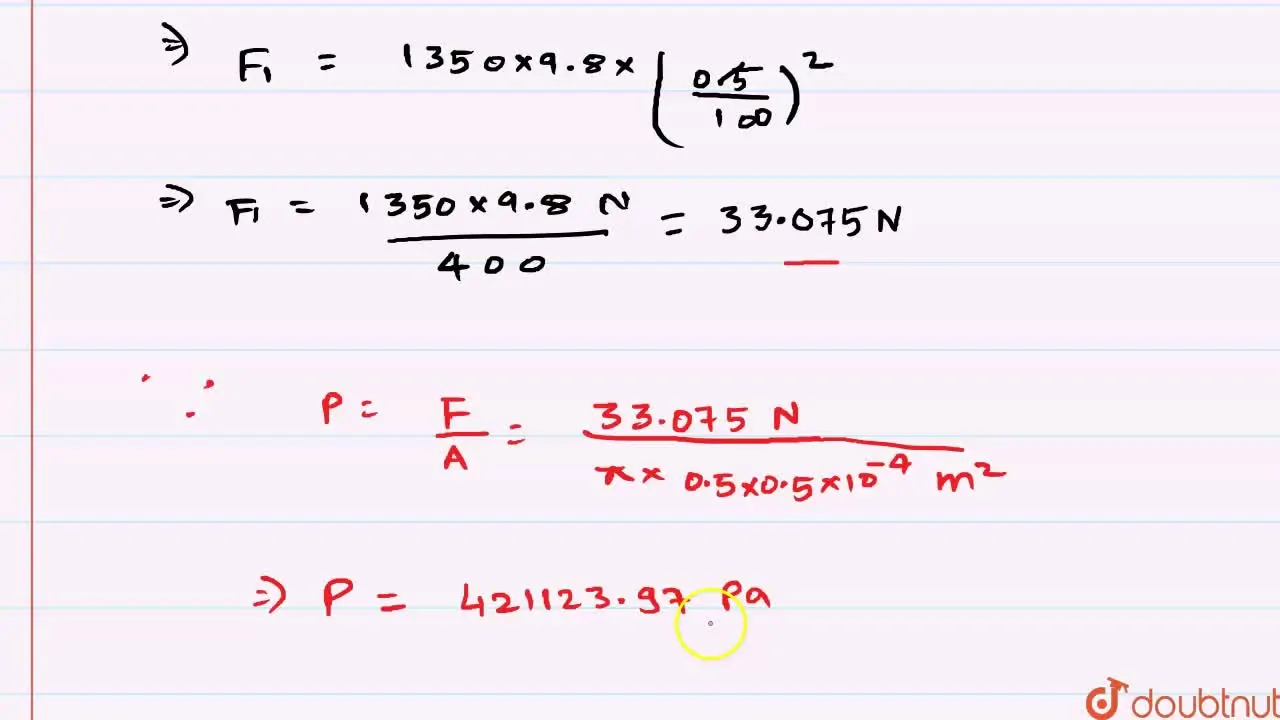In a car lift, compressed air exerts a force F1 on a small piston having a radius of 0.5cm. This pressure is transmitted to a second piston of radius 10.0 cm . If the mass of the car to be lifted is 1350 kg. calculate F1. What is the pressure necessary to accomplish this task?
Since pressure is transmitted undiminished throughout the fluid,
F1=A1A2=F2=π(5×10−2m)2π(15×10−2m)2(1350kg×9.8ms−2)
=1470N
≈1.5×103N
The air pressure that will produce this force is
P=F1A1=1.5×103Nπ(5×10−2)2m=1.9×105Pa
This is almost double the atmospheric pressure. Hydraulic brakes in automobiles also work on the same principle. when we apply a little force on the pedal with our foot the master piston moves inside the master cylider. and the pressure caused is transmitted through the brake oil to act on a piston of larger area. A large force acts on the piston and is pushed down expanding the brake shoes against brake lining. In this way, a small force on the pedal produces a large retarding force on the wheel. An important advantage of the system is that the pressure set up by pressing pedal is transmitted equally to all cylinders attached to the four wheels so that the braking effort is equal on all wheels.
Related Playlists
- BOOK - NCERT ENGLISHCHAPTER - MECHANICAL PROPERTIES OF FLUIDSEXERCISE - EXERCISE31videos
MECHANICAL PROPERTIES OF FLUIDS
- BOOK - NCERT ENGLISHCHAPTER - LAWS OF MOTION EXERCISE - EXERCISE40videos
LAWS OF MOTION
- BOOK - NCERT ENGLISHCHAPTER - MECHANICAL PROPERTIES OF SOLIDSEXERCISE - EXERCISE21videos
MECHANICAL PROPERTIES OF SOLIDS
Similar Questions
In a vehicle lifter the enclosed gas exerts a force F on a small piston having a diameter of 8 cm. This pressure is transmitted to a second piston of diameter 24 cm. If the mass of the vehicle to be lifted is 1400 kg then value of F is
View SolutionIf a pressure of 378 atm is exerted on a circular cross section of radius 0.1 mm, what is the force exerted on the area?
View SolutionA small object of height 0.5 cm is placed in front of a convex surface of glass (μ−1.5) of radius of curvature 10cm. Find the height of the image formed in glass.
 View Solution
View SolutionA disc of mass 5 kg and radius 50 cm rolls on the ground at the rate of 10ms−1. Calculate the K.E. of the disc.
View SolutionFigure shown a hydraulic press with the larger piston if diameter 35 cm at a height of 1.5 cm at a height of 1.5 m relative to the smaller piston of diameter 10cm. The mass on the smaller piston is 20 kg. What is the force exerted on the load by the larger piston? The density of oil in the press is 750kh/m3 . (Take g=9.8m/s2)
 .View Solution
.View SolutionThe radius of an air bubble is increasing at the rate of 0.5 cm/sec. At what rate is the volume of the bubble increasing when the radius is 1 cm?
View SolutionThe radius of a circular plate increase at the rate of 0.1 cm per second. At what rate does the area increase when the radius of plate is 5πcm?
View SolutionIn a hydraulic lift, used at a service station the radius of the large and small piston are in the ration of 20:1. What weight placed on the small piston will be sufficient to lift a car of mass 1500kg ?
View SolutionFigure shown a hydraulic press with the larger piston if diameter 35 cm at a height of 1.5 m relative to the smaller piston of diameter 10cm. The mass on the smaller piston is 20 kg. What is the force exerted on the load by the larger piston? The density of oil in the press is 750kh/m3 . (Take g=9.8m/s2)
 .View Solution
.View SolutionThe radius of a sphere is measured to be (2.1±0.5) cm. Calculate its surface area with error limits .
View Solution


